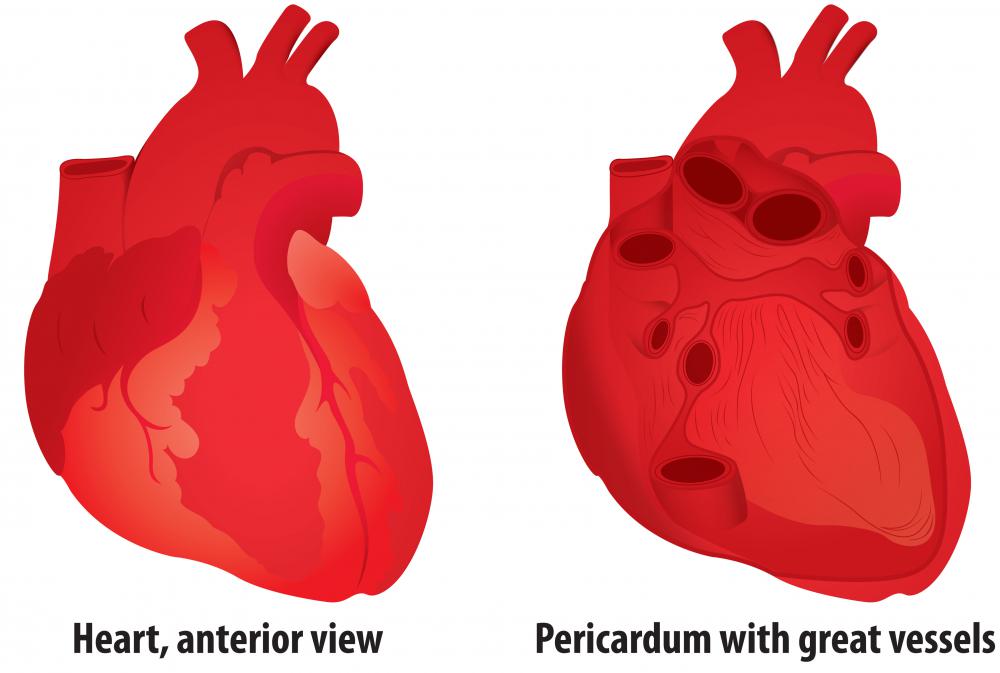At WiseGEEK, we're committed to delivering accurate, trustworthy information. Our expert-authored content is rigorously fact-checked and sourced from credible authorities. Discover how we uphold the highest standards in providing you with reliable knowledge.
What Is the Pericardial Cavity?
The pericardial cavity is an anatomical space located between the outside surface of the heart and the pericardium of the heart, which is a tough fibrous membrane that surrounds and protects the muscle of the heart. Usually this cavity is deflated and only contains a small amount of fluid. In some cases, however, excess fluid can accumulate in this space. When this fluid buildup occurs slowly over time, patients might not have any symptoms. If the fluid accumulates rapidly, the increased size of the cavity could limit the ability of the heart to pump blood.
Normally the pericardial cavity is a rather small space, and is in healthy people it is filled with approximately 1.7 ounces (50 milliliters) of clear fluid. The pericardial cavity is considered to be a potential space, meaning that while usually it is small, it has the ability to become larger and accumulate a much larger volume of fluid. This can occur as a result of a number of different pathologic processes in the body.

In order to evaluate whether the pericardial cavity is healthy and normal, a number of different studies can be performed. First, doctors or other health care professionals are able to listen to the heart to hear if there are any abnormal heart sounds present, which might signify the presence of underlying disease. A transthoracic echocardiogram, which is an imaging modality that uses sound waves to understand the structure of body parts under the surface of the skin, can provide important information about the size and contents of the pericardial space. If the cavity is found to be enlarged with fluid, a procedure called a pericardiocentesis can be done, in which a needle is inserted into the chest wall in an attempt to withdraw some of the fluid present in pericardial cavity.

When excess fluid is present between the heart and the pericardium, this condition is known as a pericardial effusion. A variety of diseases can cause this fluid buildup, including infections, autoimmune diseases, cancers, kidney failure, trauma, and decreased thyroid function. Often the etiology of the effusion can be determined based on the results of the patient's medical history and laboratory studies. If the reason why an effusion has developed is elusive, a sample of the pericardial fluid and pericardial membrane could help elucidate the cause of the fluid accumulation.

Rapid accumulation of fluid into the pericardial cavity can be much more dangerous because it can compress the heart and inhibit its ability to pump blood throughout the rest of the body. This condition is called cardiac tamponade. An emergency, this condition often requires immediate decompression by cutting open the pericardial membrane to let out some fluid and relieve the pressure on the heart.
AS FEATURED ON:
AS FEATURED ON:

















Discuss this Article
Post your comments